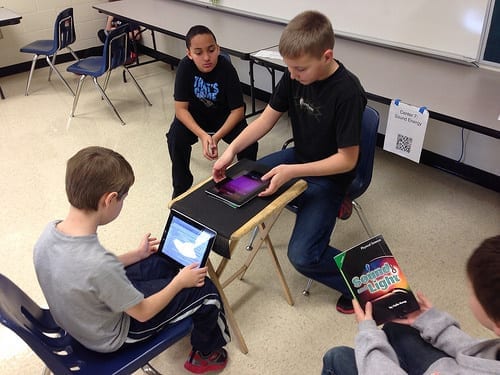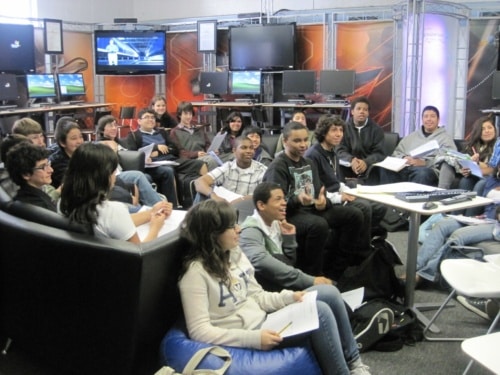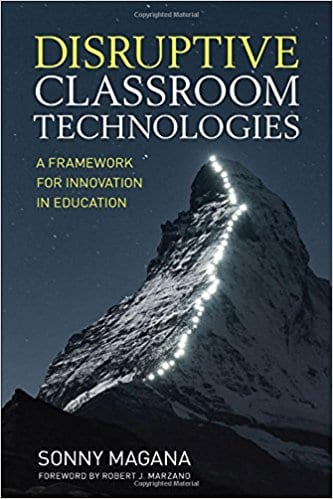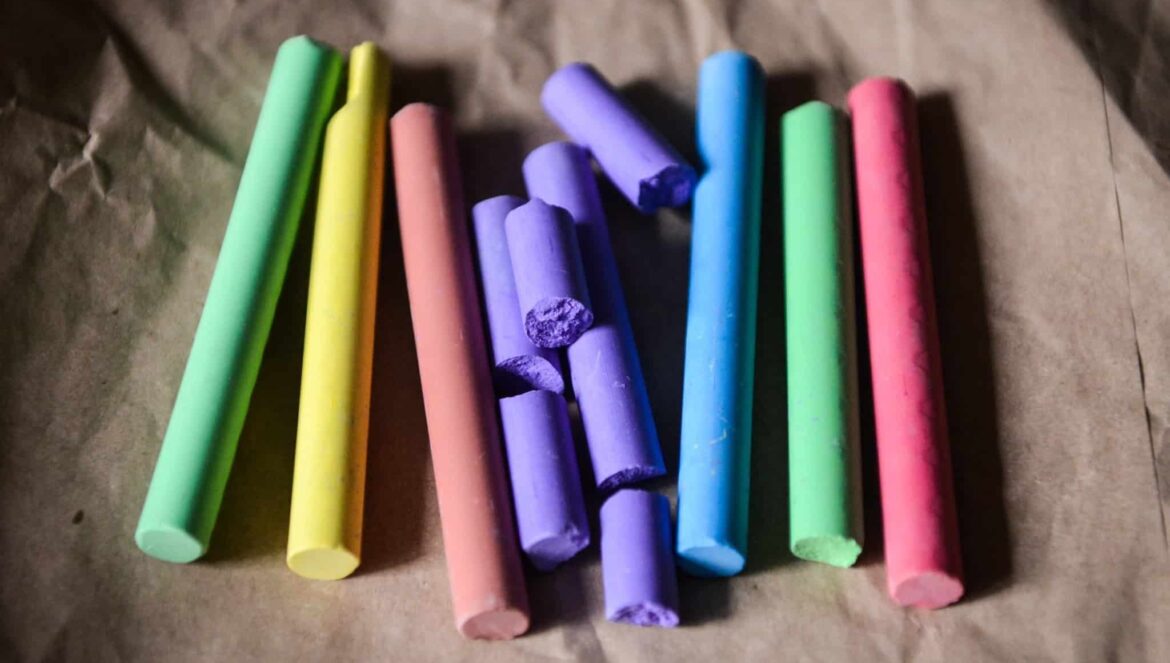A Framework for Innovation in Education by Sonny Magana – A Book Review
Reviewed by Sarah Ambrose
 Let us imagine for a moment the following scenario: students buzzing around a classroom, out of their seats, sending messages to one another, talking and bouncing from one computer to the next. In one corner of the room, a few students sit huddled and whispering. As the clock ticks by, the students begin to open tablets and click on what appears to be a game. The teacher moves around the room — occasionally commenting — but doesn’t appear to do much teaching. One student calls out, “we’ve got it!” The classroom applauds and all the students join together in a victory dance. The teacher sends out a quick email, and 15 minutes later an announcement is made over the intercom. “Starting next month, Miss Wilson’s 6th grade classroom will be designing the lunch menu.” You hear cheering from adjoining classes and the students in Miss Wilson’s class are all beaming.
Let us imagine for a moment the following scenario: students buzzing around a classroom, out of their seats, sending messages to one another, talking and bouncing from one computer to the next. In one corner of the room, a few students sit huddled and whispering. As the clock ticks by, the students begin to open tablets and click on what appears to be a game. The teacher moves around the room — occasionally commenting — but doesn’t appear to do much teaching. One student calls out, “we’ve got it!” The classroom applauds and all the students join together in a victory dance. The teacher sends out a quick email, and 15 minutes later an announcement is made over the intercom. “Starting next month, Miss Wilson’s 6th grade classroom will be designing the lunch menu.” You hear cheering from adjoining classes and the students in Miss Wilson’s class are all beaming.
What just happened was transcendent education: students were enabled to utilize technology disruptively to solve a “wicked” (in this case school-wide) problem. What was that wicked problem? The students were concerned about overall health outcomes, not only for themselves, but for 6th graders across the state of Mississippi. Earlier that year, the 6th graders hypothesized a multifaceted solution involving creating a garden, networking with local farms, researching low-cost foods with high nutritional value, and enabling a means of polling students throughout the system on what they like to eat and why. They also linked up with the school administrators to talk about cost and design recipes. It turns out the recipes are more cost-effective than the statewide school food, and would enable a health revolution for students. Unfortunately, this is just a made-up story.
Fortunately – as argued by Sonny Magana – success stories like the previous description are quite possible. But how? In short: a major disruption to the way we utilize technology in the classroom! In the case of Miss Wilson’s classroom, the disruptive technology source was the Internet, the form of collaboration around technology and supporting systems. This is but one example of the T3 “Framework for Innovation in Education” provided by Magana: a new taxonomy not only  useful for enabling the use of technology in the classroom but in learning how to transcend educational settings and affect positive societal and practical change.
useful for enabling the use of technology in the classroom but in learning how to transcend educational settings and affect positive societal and practical change.
In Disruptive Classroom Technologies, Sonny Magana explains exactly how to make what seems like an unbelievable classroom scenario and outcome entirely achievable, and he does so through examples of small incremental change. Magana’s T3 Framework is hierarchical. All teachers begin with T1 and move methodically through to T3. We love the fact that Magana makes sure that each teacher – no matter where they are in their careers – can affect change for themselves and for their students through the use of disruptively thinking about tech in the classroom.
The first tier is T1. When students and teachers engage with T1-type education technologies, Magana explains that tasks are translated from an analog setting to a digital setting. This is the most rudimentary use of technology – “the digital worksheet.” Teachers may email parents, and students may switch from pen and paper to fingers and keyboard. In a sense, the T1 technology serves to speed up processes and minimize error, but remains limited at this initial stage.
“This is primarily how educational technology tools are used in schools and may contribute to why we have not seen systemic transformational use of technology in the process of teaching and learning.”
T2 is a lot more exciting and is defined as “transformational.” Transformation is a higher level of learning where the result is a growth-mindset for students who produce, contribute to, and track their learning processes. T2 is made possible through educational technologies such as Screencastify, EduCreations, YouTube, Google Docs and others.
“Students use technology not only to experience new knowledge but to apply that knowledge in the production of an authentic digital artifact that represents what students know and how they came to know it.”
 The final tier, T3, is illustrated at the beginning of this book review, and will vary depending entirely on your students’ passions. At this stage, educational technologies enable a form of transcendence, where students’ passions, will, grit and positive social economy meld together to solve the world’s “wicked” problems. The final product is not a classroom of students who ace tests and gain acceptance into good colleges. The final product is a more well-connected social network of learners who continue to “…imagine, to dream up scenarios of applied ideas [through this] uniquely human enterprise.” T3 enables the most important social entrepreneurs of the future. For educators willing to take the leap into translating, transforming and transcending technology in the classroom, we think Magana’s T3 Framework is an exciting, accessible and obtainable way forward.
The final tier, T3, is illustrated at the beginning of this book review, and will vary depending entirely on your students’ passions. At this stage, educational technologies enable a form of transcendence, where students’ passions, will, grit and positive social economy meld together to solve the world’s “wicked” problems. The final product is not a classroom of students who ace tests and gain acceptance into good colleges. The final product is a more well-connected social network of learners who continue to “…imagine, to dream up scenarios of applied ideas [through this] uniquely human enterprise.” T3 enables the most important social entrepreneurs of the future. For educators willing to take the leap into translating, transforming and transcending technology in the classroom, we think Magana’s T3 Framework is an exciting, accessible and obtainable way forward.
Disruptive Classroom Technologies: A Framework for Innovation in Education is available on Amazon.

Author
Sarah Ambrose is the Co-Founder of NOLArts Learning Center. Though community access programs, NOLArts organizes and assists groups of young people with autism to participate in myriad of cultural institutions and events including, museums, parades, and public performance. Sarah is a music educator and freelance writer who lives in Bayou St. John, Louisiana.
Further Reading
- Juneau Empire – 20 years in, Juneau Community Charter School is still constructing its own path
- Chronicle of Higher Ed – Yes, We Should Teach Character
- Teacher Magazine – Classroom layout – what does the research say?


